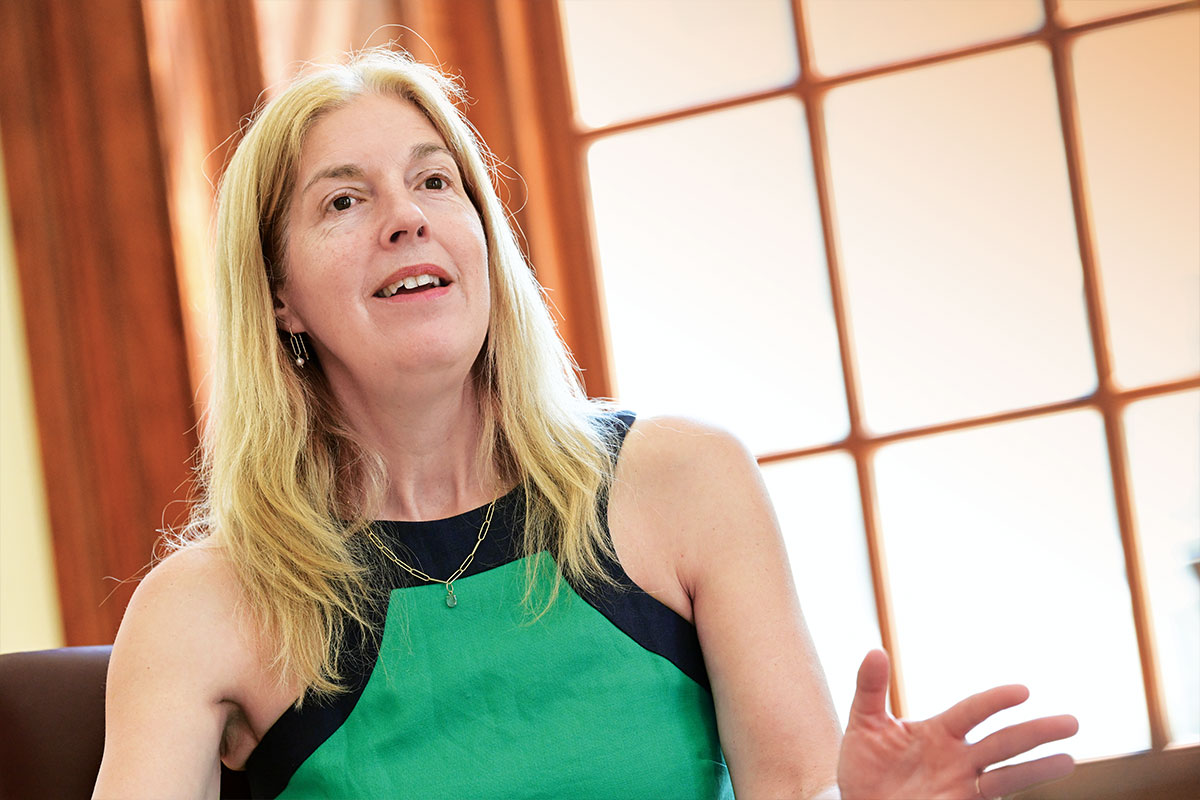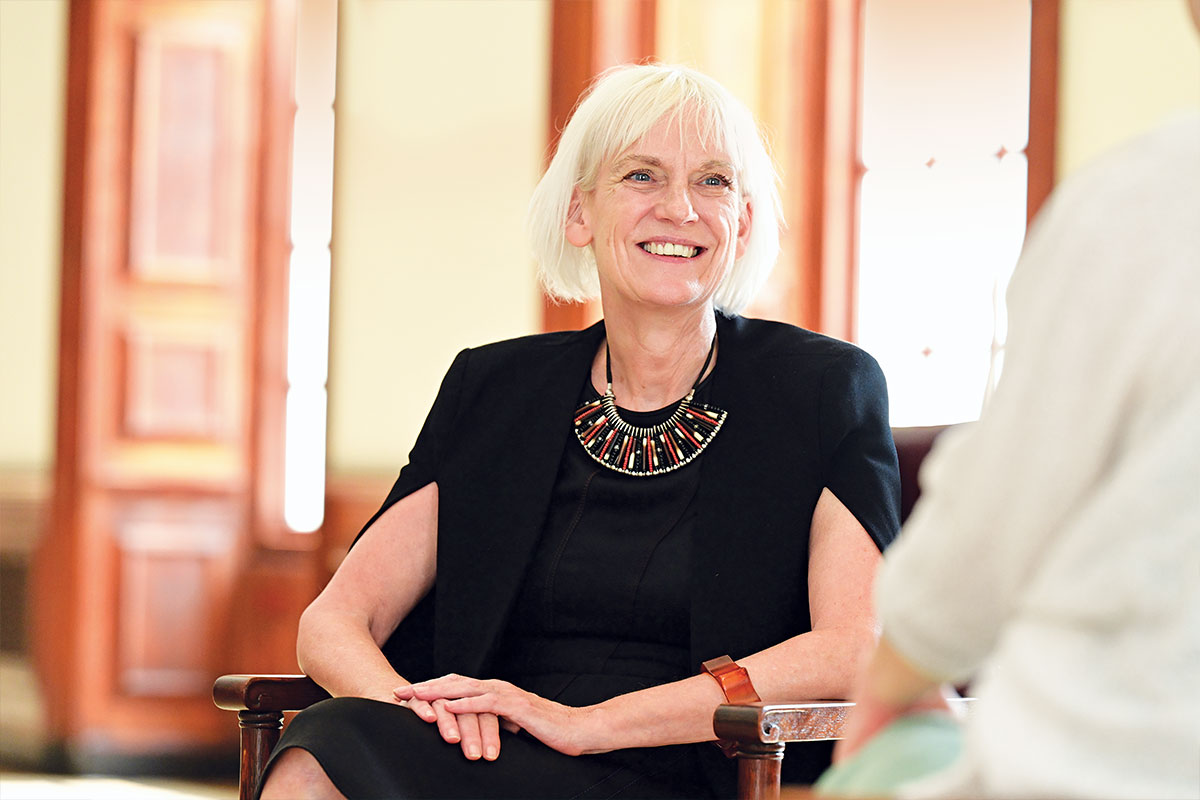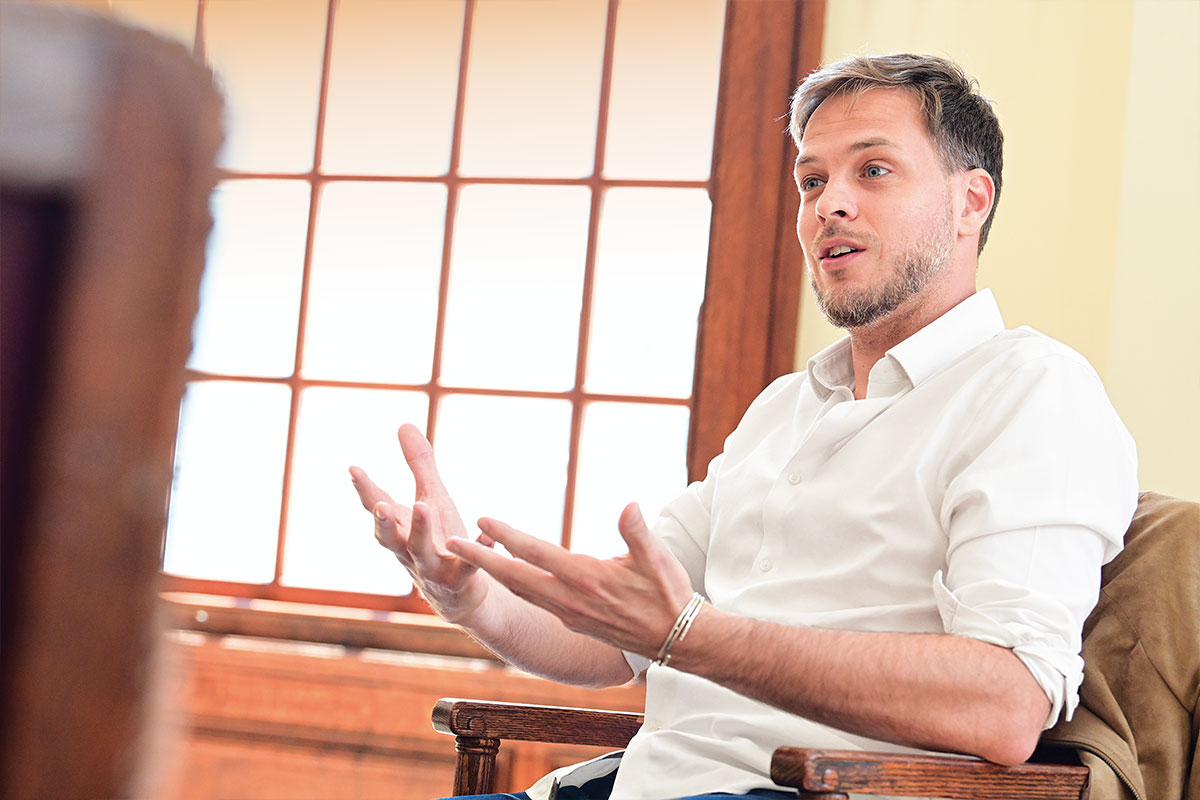
Interview
Scientific publishing needs fixing. But how?
It’s time to rethink the societal cost of paywalls and hefty subscription fees that have long sustained academic journals.
By Jen PinkowskiIn 2022, when the Biden administration announced that all scientific papers based on federally funded research must be made freely available to the public, many questioned how to roll out such a dramatic overhaul of scientific publishing in time for the new rules to take effect in 2026. But few questioned the need to rethink the industry.
The decision came after the the World Health Organization declared an “urgent need” underlined by the COVID pandemic to transition away from existing article paywalls. Advocates around the globe had been pushing for similar changes since the early 1990s.
For decades, this growing movement has been raising questions about the traditional business model sustaining scientific journals. While paid subscriptions have long kept the lights on at publishing houses, those high fees come at the cost of scientists in low-resource settings, patients, physicians, and the general public, who are all too often priced out of accessing vital information—even if their tax dollars made the research possible in the first place. At the same time, it’s hard to ignore how the economics of publishing can shape the practice of science itself: Lacking the financial resources to participate in the system, researchers unable to place their findings in prestigious journals get caught in a vicious circle, less able to gain the necessary visibility needed to win large grants, attract big donors, and reach colleagues and potential collaborators. Yet, even as the scope of these problems have become clearer, no simple solutions have emerged.
How might new policies coming out of the White House impact scientists around the world and, equally important, the public? Will overturning old business models lead to new challenges? And what might a future look like in which scientific publishing is truly open, transparent, accessible, and sustainable?
We explored these questions in a roundtable conversation with three advocates of change: Leslie B. Vosshall, Susan King, and Nicolas Vabret, all of whom are looking for ways to drive a more open exchange of scientific findings.
Vosshall is vice president and chief scientific officer at the Howard Hughes Medical Institute (HHMI), where she directs HHMI’s wide-ranging portfolio of biomedical research programs; she is also Rockefeller’s Robin Chemers Neustein Professor and head of the Laboratory of Neurogenetics and Behavior, researching the disease-spreading Aedes aegypti mosquito. King is executive director of Rockefeller University Press, where she oversees a small but influential quartet of peer-reviewed publications: Journal of Cell Biology, Journal of Experimental Medicine, Journal of General Physiology, and Life Science Alliance. And Vabret, an immunologist at the Icahn School of Medicine at Mount Sinai, is a founder of a group called the Preprint Club that reviews papers on the bioRxiv server.

Scientists have been talking for decades about establishing more open systems for academic publishing. How has this conversation evolved?
LBV: It goes back to the birth of the internet, which was incredibly disruptive for traditional print journals. They had long controlled the sharing of new data, charging people both to publish papers and to read them. Suddenly, that monopoly came under threat when almost anyone could make a PDF and share it for free. As all sorts of information became available online, many people realized that science is often a closed world that most don’t have access to. Instead, they would encounter paper after paper locked behind a journal’s paywall.
NV: It’s a system that never made sense: The public makes huge investments in science, while publishers, not citizens, reap the rewards.
SK: For years, many journals have been experimenting with open-access publishing, making either some or all articles available for free. Then came preprint servers like bioRxiv, giving scientists the opportunity to shortcut the peer-review process and share new research findings more quickly.
Today, we have a mixed bag of publishing models—traditional closed journals; hybrids with a mix of open and closed papers; and fully open-access journals, where authors typically pay a fee to publish—and preprints. The pandemic showed us just how critical immediate access to new information can be—for scientists as well as for policymakers, health-care providers, educators, and the rest of us.
Can you talk more about how the pandemic changed the publishing landscape?
NV: Almost overnight, preprint servers became the breaking-news repositories for COVID research. As scientists around the world scrambled to respond to the emergency, preprints served a great function, enabling us to share raw findings online for free so that colleagues could immediately access and review our data.
Additionally, many journals lifted their paywalls around COVID papers. This served as a proof of principle of sorts: Previously, many publishers had argued that the open-access model would be too hard to implement. The pandemic showed us it was possible.
LBV: In fact, COVID wasn’t the first such lesson. Back in 2016 when Zika became a public health threat, journals like Cell said they’d publish research on the virus within two weeks. That’s when we realized that it really shouldn’t take three years to publish new findings, as often happens under normal circumstances.

New White House regulations will largely end journals’ ability to embargo articles based on federally funded research for up to a year after publication. How big an impact do you expect that to have?
SK: These paywalls have essentially meant many publications were out of reach for those without the means to subscribe or who didn’t have access to a university library.
I see the new policy as a catalyst for wide change, and it didn’t come as a big surprise for the industry. Like many other academic publishers, we at Rockefeller University Press had been expecting it for quite some time. The groundwork was laid in 2013 when the Obama administration issued a memorandum to all federal agencies to develop plans to increase public access to federally funded research.
We’ve been transitioning to open access for some time now. All articles published by Rockefeller University Press are openly available to all no later than six months after publication.
LBV: It will immediately have a global impact in terms of what data becomes available. The United States’ National Institutes of Health (NIH) absolutely dwarfs other health funders around the world, with an annual budget of $45 billion. Eighty-five percent directly funds research, which may take place in any number of countries. So, in effect, the policy dismantles the traditional publishing system—and that system is really a strange arrangement when you think about it. Embargoing new discoveries is like saying, “I’ll sell you this loaf of bread for $10,000, or you can wait 12 months and get it for free when it’s stale.”
If you have a child with a rare disease, you’ll now have immediate access to the latest research on that disorder free of charge. If you’re a clinician at a rural hospital in a low-resource country, you’ll be able to keep up with any clinical research funded by the U.S. government—knowledge that may have previously been out of reach because your hospital couldn’t afford the subscription fees.
What role do you see for preprint servers going forward?
SK: Scientists have found utility in preprints, so it’s hard to imagine them going away. They won’t necessarily replace traditional publishing—many papers posted on a preprint server will eventually wind up in a journal. But they offset some of the delays of the current system by providing immediate and free access to new findings.
Interestingly, not all scientists want to post preprints. Many who publish in our journals, for example, choose not to do it. Anecdotally, I think some see a risk of being scooped—that a rival research group will take their idea and run with it, and potentially beat them to getting a paper accepted for publication in a peer-reviewed journal.

A concern often expressed about preprints is that bad research is easy to publish and more easily disseminated.
NV: That’s certainly important to consider, but in my experience, preprints have the opposite effect: When everyone can see everything, that actually shines a light on bad research. Errors or poorly done experiments become easier to spot and easier to call out. At the same time, the preprint system can end up shining a light on good research.
Something to keep in mind about the current system, in which journals conduct peer review behind closed doors, is that a lot of information gets lost. When a manuscript undergoes revision, new data may be obtained and added, existing data points may be taken out, or whole experiments may be omitted—and only the authors, reviewers, and editor get to see that back-and-forth.
With preprints, it’s a very different situation: Experts in a field work together in full transparency to ensure quality and accuracy. My lab and others found this model to be especially helpful during the pandemic, when postings on bioRxiv were skyrocketing.
Like many of my immunology colleagues at Mount Sinai, I was working from home during the lockdown and wanted to contribute my expertise. So, we started what became known as the Preprint Club, screening and highlighting bioRxiv manuscripts of note. A group at the University of Oxford was doing something similar, so we began collaborating with them and were soon joined by labs at the University of Toronto and Karolinska Institutet, in Sweden.
Do you think preprints offer additional benefits beyond open access? Do they push the whole industry toward more transparency?
LBV: That’s right, and some journals are in fact trying out this “everyone sees everything” approach as well. For example, the nonprofit journal eLife has a new model that gives authors a choice in how they respond to feedback from reviewers. They can go back and revise the manuscript, or they can simply say, “Thank you for your opinion,” and publish the original version along with the reviewers’ comments and questions. It’s very exciting.
“The pandemic showed us just how critical access to new scientific information can be—to scientists and the rest of us.”
SK: Readers have been able to check a preprint post against the version-of-record article, but we’ve also been inspired to experiment with the visibility of reviewer reports. In two of our journals, authors have the option to publish all formal correspondence for their accepted manuscript, including editorial decision letters, peer reviewer comments to the authors, and the authors’ responses. We provide this correspondence as a supplementary file online with the published article. The idea of this initiative is that the correspondence will provide further context to readers and also serve as an educational tool for authors and reviewers alike.
Let’s talk about the economics of the new federal policy. What happens when journals can no longer charge for access?
NV: It’s the big question that everyone’s asking: Who’s going to pay?
The policy doesn’t address the loss of revenue that journals face when they can no longer use paywalls. They typically compensate by raising article processing charges, or APCs, that scientists and institutions have to pay to publish with open access—and APCs are a huge problem in and of themselves. They vary from journal to journal, and it’s crazy how different they are.
LBV: For instance, every time you publish an open-access paper in a Springer Nature journal, it costs around $11,000. For one paper. Elsevier charges similarly, around $10,000 per paper, while several nonprofit publishers charge as little as $2,000. It begs the question of whether these expensive for-profit journals are setting a fair price for the services they provide.
SK: This is a great question that the industry is grappling with: How do we maintain sustainability while ensuring that we are maintaining equity and not placing the burden on the authors? Institutions, publishers, and funders are having these conversations now to determine the best way forward. But while this is happening, our policy remains that the inability to pay does not affect the publication of an author’s manuscript if they are experiencing financial hardship or complications with requirements by their funders.
NV: How, for instance, is the NIH going to handle surging APCs? It’s an urgent problem to solve because federal money that’s now being funneled to publishers could instead be used to fund more research.
One idea is that the NIH could cap the part of a research grant that’s earmarked for publishing expenses. A more radical solution would be for the agency to start a publishing service of its own—it has the scientific networks and the expertise to make it happen.
The new mandate applies only to government-sponsored research, which generates about half of the papers published by U.S. scientists. Do you foresee a future in which all scientific publishing becomes widely accessible, both here and in other countries?
“Embargoing discoveries is like saying, I’ll sell you this loaf of bread for $10,000, or you can wait 12 months and get it free when it’s stale.”
SK: It will largely depend on how different governments approach open-access mandates, and the portion of a journal’s articles that are published in regions with such policies. Rockefeller University Press journals are already in the process of becoming fully open. It’s a complicated transition, but we’re making progress. About 36 percent of the articles published this year in our portfolio are now immediately open, and it’s growing fast. We expect it will be 70 percent by 2026 with funder and institutional support. I can only speak for smaller operations like ours—journals that come from research institutions or academic societies—but I’m fairly certain we all have the same mission as scientists: to disseminate research as widely as we can.
LBV: HHMI has had an open-access requirement since January 1, 2022. All HHMI lab heads must publish their work on an immediate open-access basis under a CC BY license. They all sign a rights-retention agreement that they submit to journals along with their paper. It says that if the journal ultimately publishes work funded by us, it must be immediately accessible to all.
SK: HHMI is in good company. It’s part of Plan S, an international open-access initiative that also includes the WHO and other research-funding organizations around the world. They’re on a more ambitious timeline than the White House, aiming to make open access a reality by 2025.
LBV: My dream for the future of scientific publishing is that it will be a marketplace driven by us—the creators of science.